There is no certainty Ethiopia’s 2020 upcoming election will not be a clear win for the incumbent government, since various disagreements have deepened with opposition groups, dissenting public opinion, and the long-standing border dispute between the Somalis and Oromo.
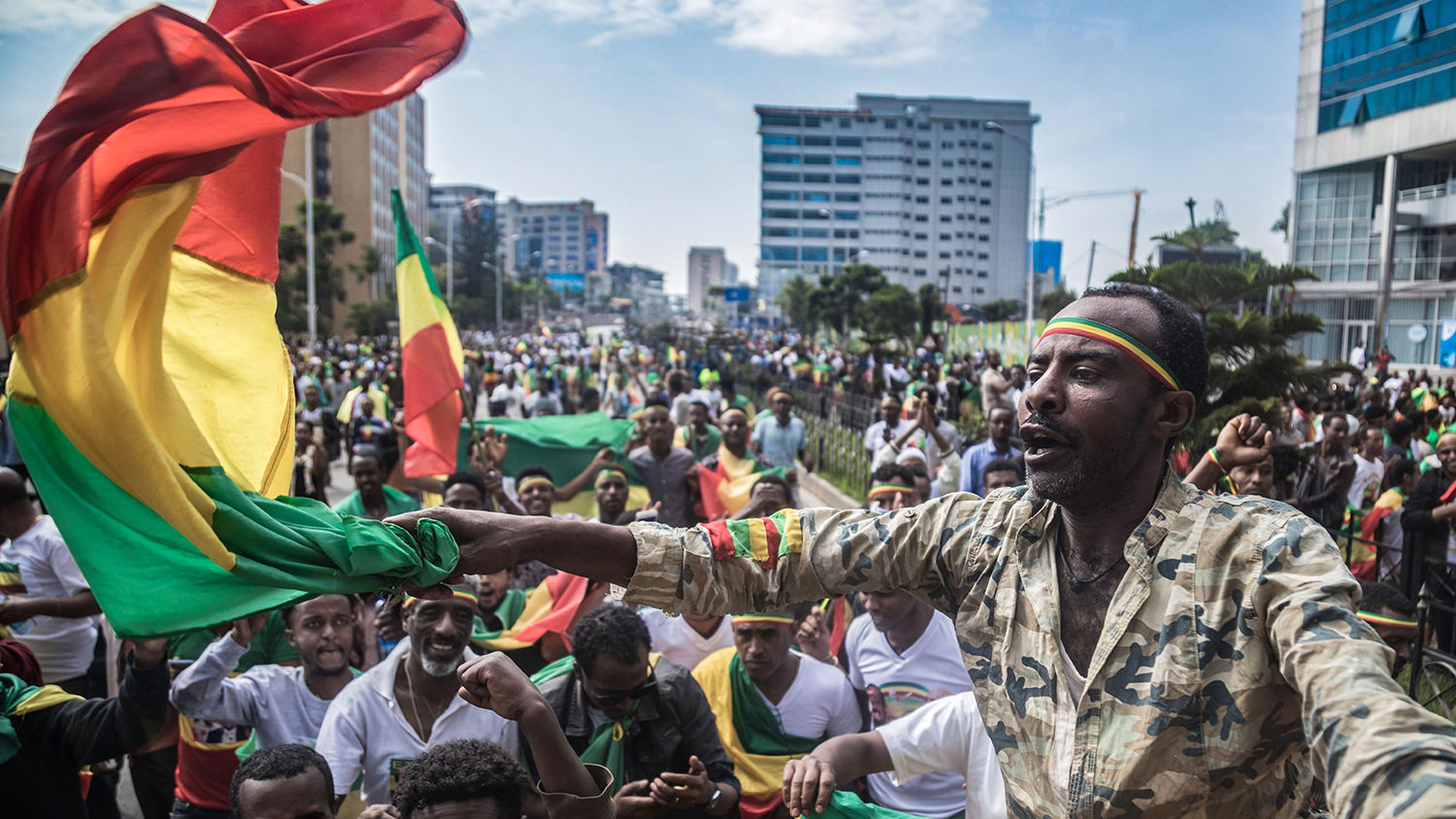
Ethiopia Rally [Getty]
Since Abiy become the new prime minister of Ethiopia, Ethiopian politics has taken a new turn. He has released political prisoners, promoted media freedom and increased inclusion of women into the political arena. He has also invited the opposition to the discussion table, and reduced tension in the 18-year feud between Ethiopia and Eritrea. As a result, some politically-oriented Ethiopians believe Abiy has taken exquisite and peerless actions.There are also several reprehensible issues, which have started under his tenure. Communal violence has peaked whilst agreements with opposition groups was met with skepticism. Moreover, the number of internally displaced people (IDPs) in Ethiopia has reached a zenith due to the ethnic violence, for which human rights organizations have heavily criticized Ethiopia’s leadership.Several political analysts note that Abiy’s transformations are only a veneer, because his agreement with oppositions groups are yet to be implemented, especially with the Oromo Liberation Front (OLF), the oldest opposition in the country. This skepticism from the opposition has resulted in a new coalition party aimed at undermining the incumbent government in the upcoming Ethiopian 2020 election. Ogaden Liberation Front (ONLF), the second oldest opposition has complained of mistreatment by the leadership of the Somali region. Outspoken opposition politician Lidetu Ayalew of the Ethiopian Democratic Party has asserted, “Ethiopia as a nation is not ready to hold general parliamentary elections.”On the other hand, Abiy disbanded the longest ruling party in the country, the EPRDF, an action that has resulted in a widening dichotomy within his inner-circle. Jawar, an Oromo media tycoon, has tremendous support from the youth, especially since the Oromo region has boycotted Abiy’s policies. With all these various issues and considerations, there is much anticipation as to how the upcoming elections will unfold.
Ethiopia is a mosaic of communities with a nucleus of federalism. Historically known as Abyssinia, Ethiopia is Africa’s oldest independent country as well as one of the largest nations, with a population of over 100 million, according to the national census held in 2013. Ethiopia has as many as 80 ethnic groups, each with its own language.
It has been considered a symbol of African independence throughout the colonial period, was a founder member of the United Nations and the African base for a number of international organizations. Ethiopia is currently the primary regional actor when it comes to east African countries, owing to its population size as well as military capabilities. (1)
Ethiopia consists of ten regional states, namely: Oromia region, Amhara region, Somali region, Tigray region, Gambela region, Southern nation’s nationalities and people region, Afar region, Benishangul-Gumuz region, Harari region and the late coming region Sidama region. There are also two Administrative states (Addis Ababa City administration and Dire Dawa city council). (2) The Ethiopian People’s Revolutionary Democratic Front (EPRDF), a political coalition, control all 547 seats in Ethiopia’s parliament, which has the mandate of confirming candidates for the new prime minister position.
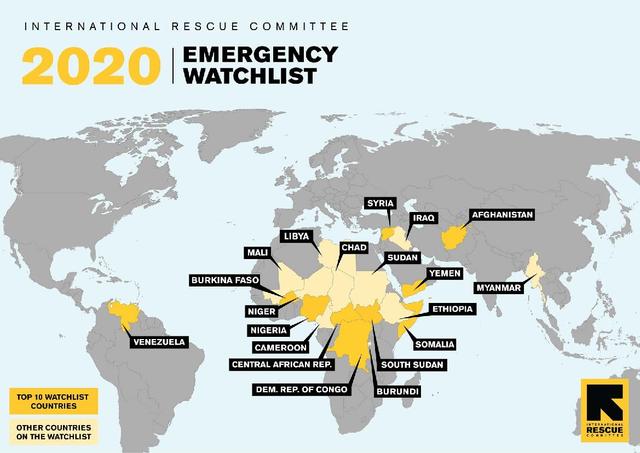
Anatomy of Ethiopia’s Multi-culturalism
The EPDRF is comprised of four main parties, which include the Tigrayan People’s Liberation Front (TPLF), the Amhara National Democratic Movement (ANDM), the Oromo Peoples’ Democratic Organization (OPDO) and the Southern Ethiopian People’s Democratic Movement (SEPDM). Each one of these four parties represent a regional state and are eligible to nominate candidates for the prime minister portfolio. The EPRDF has become the overarching party in power in the country since 1991. (3) Some observers have credited Ethiopia’s stability with over 100 million inhabitants to what could be considered a mosaic federal system.
However, Ethiopia may sometimes become a volatile country in Africa since specific ethnicities have dominated the country whilst marginalizing other communities. There are several cultural and identity-related issues unsettled between Amhara, Tigray and Oromo communities. Still, these ethnic groups have become the political dynasty in Ethiopia.
The question is why only these three communities are eligible to engage in the top decision-making positions whilst others are disregarded, especially Somalis, who represent the third most populous community and the inhabitants of the second largest area in Ethiopia. One may assume Ethiopia is not yet a democratic country with free and fair elections. Disparity and injustice are the underlining causes of this blatant social disarticulation in Ethiopia. The Somali region becomes a soft target and susceptible community for any hetero and naked aggression from the ruling communities respectively. (4)
Currently, Ethiopia hosts the highest number of IPDs since World War II. Over 3.2 million people were displaced by conflict and drought in April 2019. This internally human displacement and uprooting are caused by disparity, rising acrimony and communal violence among different communities. This mass internally displacement movement exceeds the number of refugees from Syria, Afghanistan, Libya, Somalia and Yemen according to the Norwegian Refugee Council (NRC).
The 2019 Global Peace Index (GPI) has ranked Ethiopia number 131 as a peaceful country out of 163 countries, twelve points down from the ranking of 2016. Sub-Saharan Africa consists of 44 countries, of which Ethiopia ranks 33rd, after Mali, Central Africa Republic, DRC, Somalia and South-Sudan. Plenty of political analysts believe this dismal ranking is caused by weak leadership in both federal and regional levels. (5)
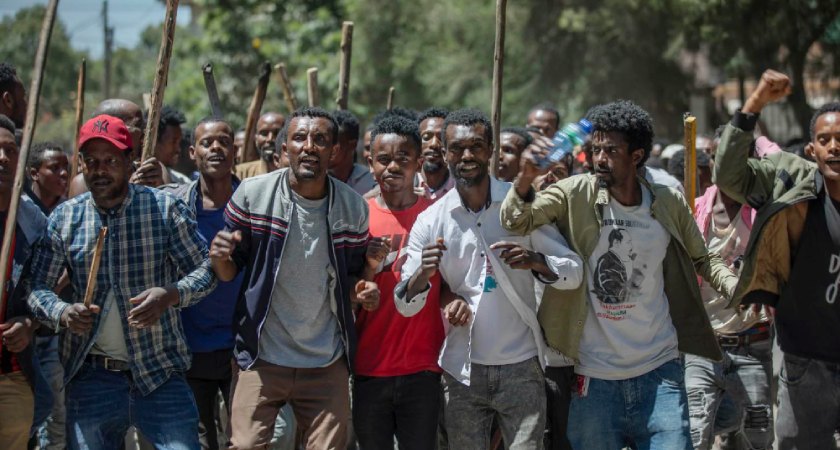
What is Behind the Rise of Abiy to the Premiership?
Mass protests have erupted over land rights in Ethiopia since 2015, when anti-government demonstrations broke out among the Oromo, and later spread to the Amhara, the second biggest ethnic group in the country. The protests later shifted into demands for greater political representation at the national level; however, were met with a harsh government response.
These developments ultimately led to the resignation of prime minister and chairman of EPRDF, Hailemariam Desalegn, February 15, 2018. In his last speech, he stated he would stay in his post in a caretaker capacity, until the EPRDF named a successor. Hailemariam’s abrupt resignation prompted the government to declare a six-month state of emergency in a bid to stem political unrest amid long-standing demands for greater freedoms. (6) The EPRDF council held a meeting with the attendance of 45 members of each of the four allied parties to elect Abiy Ahmed to take over from Desalegn. A former Minister of Science and Technology, Abiy became the EPRDF’s new chairman, after securing 108 out of 180 votes, to become the first Oromo prime minister in the 27 years EPRDF has been in power. This shift paved the way for his nomination as Ethiopia’s prime minister, primarily because the chairman of the EPRDF has historically also taken on prime minister duties. He was sworn in as the newly elected prime minister on 2 April 2018.
How to Work with the Federal Government?
Despite the ongoing suppression of critical voices vis-à-vis the government, there is considerable opposition, which has become resilient. The most prominent group of this opposition is the Oromo Liberation Front (OLF), formed in 1973, is the oldest opposition in Ethiopia. This opposition group was advocating the call for self-determination for the Oromo people in opposition to the Abyssinian colonial rule led by Amhara ethnic group.
Another prominent opposition group is the Ogaden National Liberation Front (ONLF), established in 1984, which is the second oldest opposition in Ethiopia. This opposition has advocated for autonomy of its respective region as a reaction against the marginalization and disregard of its people by the Federal political quota system. Ogaden is the second largest region in Ethiopia, after Oromia, and is the third populous region after Oromia and Amhara regions respectively.
Another opposition party is Gimbot 7, the third oldest opposition entity in Ethiopia, created in 2008. It has pursued the establishment of a national political system in which government power is assumed through peaceful and democratic process based on free and fair elections. This opposition group has surfaced after the 2005 election which were overshadowed by allegations that the ruling EPRDF rigged the election, leading to various demonstrations, and resulting in the killing of over 200 people. (8)
When Abiy became prime minister in April 2018, he initiated negotiations with the opposition groups, which ultimately led to the release of political prisoners, detained under terrorism charges, affiliated with the three opposition groups July 5, 2018. Since then, members of the opposition who had fled Ethiopia have returned to the country, with the hope the country was on a positive trajectory. However, the opposition groups have rebuked the federal government of Ethiopia, mainly for not implementing the various signed agreements. This new rift escalated into violence when clashes erupted between OLF fighters and federal troops in the Oromia region in October 2018, after OLF’s leader Dawud Ibsa boycotted a federal government initiative, which sought decommissioning OLF’s fighters. Dawud Ibsa argued disarming OLF’s fighters was not part of the agreement between the federal government and the OLF representatives. (9)
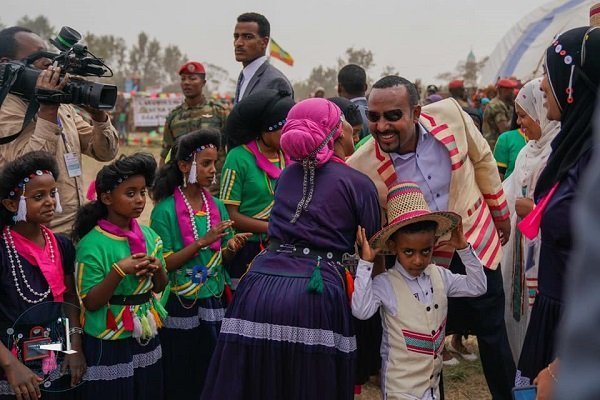
PM Abiy Ahmed visits Halaba stadium Feb. 26. 2020 (Office of the Prime Minister)
Shifting from EPRDF to EPP
As mentioned earlier, EPRDF emerged in 1991, as a party that allied the representatives of four of the ten regions in Ethiopia namely Tigrayan People’s Liberation Front (TPLF), Amhara National Democratic Movement (ANDM), Oromo People’s Democratic Organization (OPDO), and Southern Ethiopian People’s Democratic Movement (SEPDM). These four parties are eligible to hold the highest political positions in the country since the establishment of this party.
The Tigray community was the longest running leaders of the country since the EPRDF was founded. Likewise, Amhara was another ethnicity, primarily due to “Patrimonial Leadership” from Haile Selassie, from 1916 to 1974 as an Emperor, and then Mengistu Haile Mariam, from 1977 to 1991. The Tigray and Amhara tended to be the “Political Dynasties” of the country. This meant that the remaining ethnics, including the largest ethnic group in Ethiopia “Oromo”, were despised.
Abiy has received criticism after he announced the creation of a new political party, the Ethiopian Prosperity Party (EPP) in November 2019. Most of his inner-circle subordinates boycotted the new party. Formed as an amalgamation of three of the four parties under EPRDF and other five parties. Only TPLF is absent of the political alliance of EPP. EPP has been established months prior to the forthcoming election in August 2020. One of the Abiy’s closest people, Lemma Magersa, Minister of Defense and formerly President of the Oromo region, rebuked this new political coalition.
Jawar and Abiy: Former Allies, New Foes
Several visible demonstrations have taken place since October 2018 in Addis-Ababa and several other regions. These protests against the incumbent government and its leader Abiy Ahmed begun after the government took action against well-known activist and Media Mogul, Jawar Mohamed. Jawar, a dual Ethiopian-American Citizen, has enormous influence in the country, having participated in demonstrations against the previous governments in 2015. Abiy and Jawar were close friends during those demonstrations, and several observers believe Jawar was one of the key players who enabled Abiy to become prime minister.
However, the relationship between the two men deteriorated and turned into a political animosity. Abiy and Jawar belong to the same Oromo community consisting of close to 40 million people. Jawar has been a strong supporter of QEERROO, a young Oromo movement that pushed for ending more than 20 years of the Tigray iron-fist rule.
Since Abiy took office in April 2018, he seems to have undermined his relationship with several politicians, including Jawar Mohamed and Daud Ibsa, whilst improving his rapport with Lemma Magersa. In January 2020, Jawar organized a huge rally from Oromo ethnic, especially the youth, in which he delivered a speech and set forth his political ambition. Jawar sounded not as an old ally of Abiy, but rather as one of his fierce opponents.
![Prime Minister Abiy Ahmed and Jawar Mohammed [Getty]](https://studies.aljazeera.net/sites/default/files/inline-images/Photo%209%20Prime%20Minister%20Abiy%20Ahmed%20and%20Jawar%20Mohammed%20%28Getty%29.jpg)
CDF as a New Coalition
While the new rift has deepened between Abiy and his former allies, another coalition of political parties was established. Jawar joined the Oromo Federalist Congress (OFC), led by Merera Gudina. The OFC, alongside Dawud Ibsa who leads OLF and Brig. Gen. Kemal Gelchu, head of Oromo National Party (ONP), joined forces in a new political alliance, namely the Coalition for Democratic Federalism (CDF). The leaders of these parties have vowed they would run in the August 2020 election. These political intentions could be another challenge which incumbent Aby will have to encounter this year, as they were in the previous government inner-circle.
Most Oromo individuals perceive Abiy as a ‘thin-skinned and lame-duck person’, since he has given wide concessions to the Amhara, a group that advocates the disbandment of the federal system and imposition of a unified government under their leadership. This demand explains why the TPLF party refused to join Abiy’s new EPP coalition. (12)
Somali Region: The back of the back beyond
Some Ethiopians believe the Somali region of Ethiopia suffers negligence and lack of developmental projects, especially infrastructure. The level of education in this region is low. Humanitarian issues are also rampant, as Qalooji IDPs hosts thousands of Somalis who have fled across the border between Oromo and Somali regions. (13)
The regional administration in the Somali region seems to be struggling. There are also other issues of high unemployment, inter-clan conflict in the region. The local leadership tends to shame their predecessors as scapegoats for its current ineffective decisions. Disparity within the Somali community is common due to the lack of accountability and transparency in the local administration.
Dam Dispute: Another Sticky Issue
As a landlocked country, Ethiopia depends on its neighbors, who have seaports in the Horn of Africa, to conduct import and export exchanges. This geographical limitation has led Ethiopia to be concerned with its long-term goals. With such a position, Ethiopia has several regional linkages with its neighbors, namely Somalia and Egypt. Since 2011, Ethiopia has been engaged in building the Renaissance Dam, formerly known as “Millennium Dam”, on the Blue Nile River in Ethiopia. After its completion, the dam will be the largest hydroelectric power plant in Africa, as well as the seventh largest in the world.
However, such a colossal project has several geopolitical dimensions; namely how Ethiopia will reconcile its differences with Sudan and Egypt, which border the Nile and plan to benefit from the dam project. Abiy has requested the assistance of South Africa’s President Ramaphosa to mediate the dispute with Khartoum and Cairo, in his capacity of the newly-elected President of the African Union as well as his good relations with Ethiopia’s and Egypt’s leaders. This request came before a meeting in Washington between the disputing states’ respective Foreign and Water Ministers and President Trump. (14)
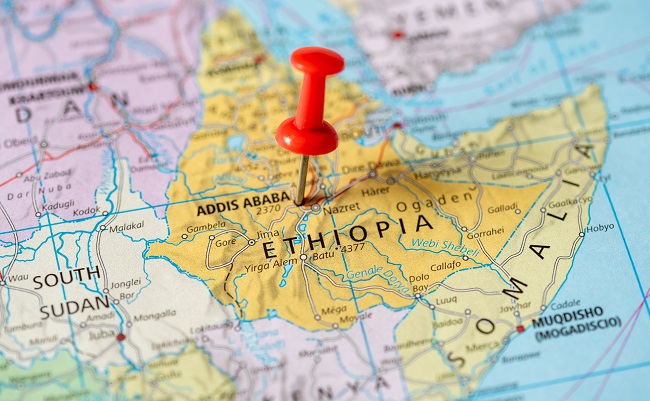
Photo 7 Ethiopia's geography and need for access to the sea (Getty)
Conclusion
There is no certainty Ethiopia’s upcoming election in August 2020 will not be a clear win for the incumbent government, since various political disagreements have deepened with opposition groups, dissenting public opinion, position of the Tigray region and TPLF party, and the long-standing border dispute between the Somalis and Oromo. On the top of these challenges, one should not underestimate the possible role of Jawar Mohamed, who holds large support of the largest ethnic group, in curbing the ambition of Prime Minister Abiy and his government.
The external factor remains significant. The border conflict among local different communities, and the religious differences have became, as some analysts have portrayed, inevitable, inexorable, invincible, ineluctable, intractable, amok, dumfounded and pandemonium. (15) US President Trump has questioned Abiy’s prowess, believing that he did not deserve to receive the Nobel Peace Prize since his grandiose promises have not been fulfilled.


No comments:
Post a Comment